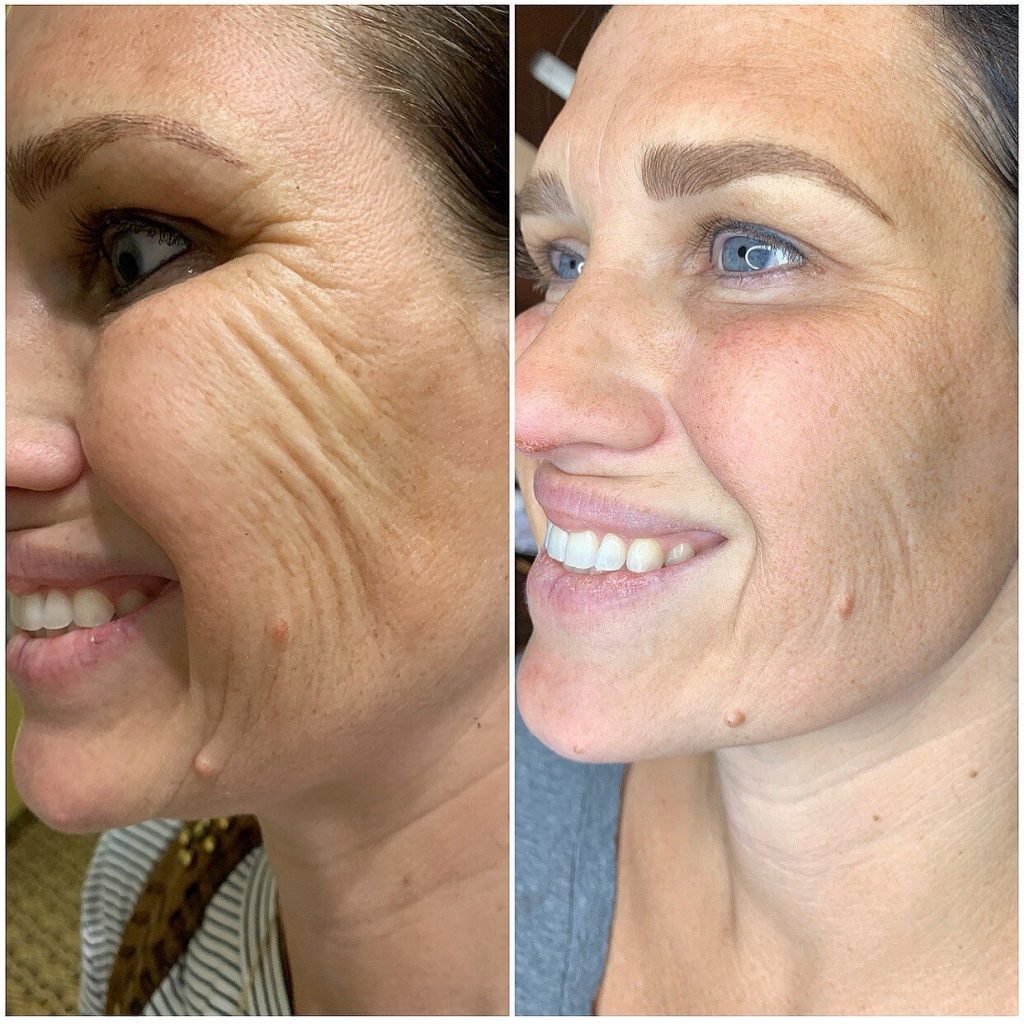Did you know that over 70% of people aged 30 and above are concerned about skin tightening? Plasma gas skin tightening is a game-changer in the beauty world. It’s gaining popularity for its effectiveness and minimal downtime. This innovative treatment uses plasma energy to stimulate collagen production, giving your skin a youthful lift with ridgeline aesthetics.
Curious about how it works? Or maybe you have questions about safety and results? In this post, we’ll tackle the most common FAQs about plasma gas skin tightening and ridgeline aesthetics. You’ll discover everything from the procedure’s benefits to aftercare tips. Get ready to unlock the secrets behind this trendy treatment and see if it’s right for you.
Key Takeaways
-
Plasma gas skin tightening is a non-invasive procedure that uses energy to stimulate collagen production, helping to tighten and rejuvenate the skin.
-
Ideal candidates for this treatment are those with mild to moderate skin laxity and who are looking for a non-surgical option to improve their skin’s appearance.
-
The procedure can be performed on various areas, including the face, neck, and décolletage, making it versatile for different skin concerns.
-
While some discomfort may occur during the procedure, most patients find it manageable; topical numbing creams can help ease any pain.
-
Following proper recovery and aftercare tips is crucial for optimal results, such as avoiding sun exposure and keeping the treated area clean.
-
Results typically appear within a few weeks and can last for several months, but individual experiences may vary based on skin type and care.
What is Plasma Gas Skin Tightening
Definition
Plasma gas skin tightening is a non-surgical cosmetic procedure. It aims to rejuvenate the skin without invasive surgery. This treatment uses plasma energy to create controlled micro-injuries in the skin. These tiny injuries stimulate the body’s natural healing process.
How it Works
The process involves using a device called a plasma pen. This device generates plasma energy from gases in the air. When applied to the skin during the opus plasma or plasma neck procedure, it transfers this energy to the dermis layer. The heat from the plasma pen causes immediate contraction of the skin fibers. This reaction leads to tighter and firmer skin over time.
Collagen and Elastin Production
One of the main benefits of plasma skin tightening is its ability to boost collagen and elastin production. These two proteins are vital for maintaining skin elasticity and firmness, especially in the plasma neck procedure. As we age, our bodies produce less collagen and elastin. This reduction leads to sagging skin and wrinkles. Plasma treatment encourages the body to regenerate these essential proteins.
Skin Texture Improvement
Over time, patients notice significant improvements in their skin texture after the plasma neck procedure. Plasma skin resurfacing helps reduce fine lines, wrinkles, and uneven skin tone. Many individuals report smoother and more youthful-looking skin after several sessions.
Treatment Areas
The plasma neck procedure is common among those looking to tighten loose skin on their necks. Other areas treated include the face, abdomen, and arms. The versatility of the plasma device makes it suitable for various body parts.
Safety and Recovery
The procedure is generally safe when performed by a qualified professional. Patients may experience mild redness or swelling post-treatment. These side effects usually subside within a few days. Recovery time varies but many return to daily activities quickly, especially after plasma skin tightening.
Long-lasting Results
Results from plasma fibroblast therapy can last for years with proper care. Maintaining a good skincare routine enhances longevity. Regular moisturizing and sun protection help preserve results.
Popularity and Technology
Plasma technology has gained popularity due to its effectiveness. Many clinics now offer treatments like Renuvion skin tightening as alternatives to traditional methods. Patients appreciate that they can achieve noticeable results without surgery.
How the Procedure Works
Device Use
Devices like the Opus Plasma combine radio-frequency and micro-plasma energy. This combination enhances skin tightening effects. The Opus Plasma device generates plasma energy through a controlled process.
The device uses a handpiece that targets specific areas of the skin. It creates tiny plasma arcs that deliver energy precisely. This method minimizes damage to surrounding tissues. The result is effective skin tightening with less downtime.
Plasma Energy Generation
The plasma fibroblast procedure begins with generating plasma energy. The device produces heat that converts gas into plasma. This plasma then interacts with the skin layers.
During the procedure, the energy penetrates deep into the dermis. It stimulates collagen production, which is vital for skin elasticity. Increased collagen leads to immediate skin retraction. Patients often see results right after treatment.
Precision and Consistency
Precision plays a critical role in achieving desired results. The Opus Plasma device allows practitioners to control depth and intensity. Each session can be tailored to individual needs.
Consistency in treatment ensures optimal outcomes. Practitioners follow established protocols for each plasma procedure. This standardization helps maintain quality across different sessions.
Results from the typical plasma fibroblast procedure can vary based on skin type and condition. However, most patients experience noticeable improvements in skin tightness.
Ideal Candidates for Treatment
Good Candidate
Individuals with mild to moderate skin laxity are often considered good candidates for plasma gas skin tightening. This treatment targets areas where skin has begun to lose its firmness. Patients typically notice sagging around the jawline, neck, or under the eyes. Those showing these signs of aging may benefit the most from this procedure.
Non-Invasive Options
Many people seek non-invasive alternatives to surgery. Plasma gas skin tightening offers a way to enhance appearance without the need for incisions. This method is less invasive than traditional surgical options. Patients can achieve significant improvements in skin texture and tightness. They often prefer this approach due to shorter recovery times and fewer complications.
Consultation Importance
Consulting with experienced professionals is crucial before undergoing treatment. Specialists evaluate each patient’s unique situation and aesthetic goals. They assess factors like skin type, age, and overall health. This assessment helps determine candidacy for the procedure. Not every individual will be suitable for plasma gas skin tightening.
Collagen Production
The procedure stimulates collagen production, which is vital for maintaining youthful skin. Patients who want to improve their skin quality should consider this aspect. Increased collagen can lead to firmer and healthier-looking skin over time.

Health Considerations
Certain health conditions may affect candidacy as well. Individuals with active skin infections or severe acne should avoid this treatment until their conditions improve. Patients with autoimmune disorders should also discuss their options with a specialist.
Age Factor
Age plays a role in determining ideal candidates too. Younger patients with early signs of aging may find this treatment effective. Older individuals might require additional treatments for optimal results.
Realistic Expectations
Setting realistic expectations is essential for all patients considering plasma gas skin tightening. Understanding what this treatment can achieve helps avoid disappointment later on. Specialists provide guidance on expected outcomes during consultations.
Follow-Up Care
After the procedure, follow-up care is important for achieving long-lasting results. Specialists recommend specific skincare routines or additional treatments when necessary. This ongoing support can enhance the effects of plasma gas skin tightening.
Areas Suitable for Treatment
Face
Plasma gas skin tightening commonly targets the face. Many people seek this skin rejuvenation treatment to improve wrinkles and fine lines. The treatment stimulates collagen production, leading to firmer skin. Areas around the eyes, mouth, and forehead often show significant improvements.
Patients notice a more youthful appearance after just one session. This area is particularly sensitive, so a qualified specialist should perform the treatment. They understand how to minimize discomfort and maximize results.
Neck
The neck is another popular area for plasma fibroblast treatment. Skin here can sag and show signs of aging over time. Tightening this area enhances overall facial aesthetics. This treatment helps create a smoother neck profile.
Many individuals feel self-conscious about their necks. Plasma treatments can boost confidence by improving skin texture and elasticity. Results typically last for several months, depending on individual care routines.
Décolletage
The décolletage area also benefits from plasma skin resurfacing. Sun exposure can cause damage in this region, leading to age spots and wrinkles. Treatments help restore youthful skin appearance.
Patients appreciate that this method requires minimal downtime compared to surgical options. The décolletage can be treated alongside the face and neck for comprehensive rejuvenation.
Abdomen
Skin tightening is not limited to the upper body. The abdomen can also undergo plasma fibroblast treatment. Many individuals seek improvements after weight loss or pregnancy. Loose skin in this area can be addressed effectively with this technique.
Results vary based on skin type and condition. However, many patients report significant tightening after a few sessions. This versatility makes it an excellent option for those looking to enhance their bodies.
Arms
Plasma gas skin tightening works well on the arms too. Sagging skin often appears as people age or lose weight. Treatment can lead to improved firmness in this area.
Many clinics offer specialized care for arm treatments. The goal is to provide natural healing while enhancing appearance. Patients can enjoy wearing sleeveless clothing without feeling self-conscious.
Versatility of Treatment
Plasma treatments are versatile across different body parts. Each area responds uniquely, but many patients notice positive changes regardless of where they are treated. This adaptability makes it appealing for those seeking skin removal improvements.
Specialists customize each treatment plan based on individual needs. They assess skin conditions before recommending specific areas for care. This personalized approach ensures effective results tailored to each patient’s goals.
Pain and Discomfort Level
Mild Discomfort
Patients may feel minimal discomfort during the plasma gas skin tightening procedure. This sensation is often described as similar to a mild sunburn. Some report a tingling feeling on their skin.
The discomfort level varies from person to person. Many find it manageable and brief. Most patients tolerate the procedure well.
Temporary Effects
Any discomfort experienced is typically temporary. It usually subsides shortly after the treatment ends. Patients might notice some redness in the treated areas. This redness can last for a few hours to a couple of days.
Swelling may also occur but is generally mild. Ice packs can help reduce swelling and soothe the skin afterward.
Post-Treatment Care
After the procedure, following specific aftercare instructions is essential. Keeping the treated area clean and moisturized aids in recovery. Avoiding direct sunlight helps prevent irritation.
Patients should also avoid harsh skincare products for a few days post-treatment. These steps promote healing and comfort.
Frequency of Treatments
The frequency of treatments can impact overall results. Depending on individual needs, some may require multiple sessions for optimal significant tightening effects. Each session builds upon the last, enhancing skin quality over time.
Consultation with a professional helps determine the best plan. They assess skin type and desired outcomes to tailor a treatment schedule.
Recovery and Aftercare Tips
Importance of Aftercare
Following the aftercare instructions is crucial for a successful recovery. Proper care helps in achieving the best results from plasma gas skin tightening. Patients should pay attention to their skin’s needs after treatment. Neglecting these instructions can lead to complications or less effective tightening.
Sun Protection
Avoiding direct sunlight is essential during recovery. The skin may be sensitive after the procedure. Exposure to UV rays can cause irritation or pigmentation issues. Patients should wear sunscreen with high SPF when going outside. Hats and sunglasses can also provide additional protection. Using recommended skincare products helps soothe the skin and promotes healing.
Recommended Skincare Products
Using specific skincare products is vital for rejuvenation. Dermatologists often recommend gentle cleansers and moisturizers post-treatment. These products help maintain hydration without causing irritation. Avoid products with strong active ingredients like retinol or acids initially. Always consult a professional for personalized recommendations.
Resuming Activities
Most patients can return to normal activities soon after the procedure. However, they should listen to their bodies and take it easy if needed. Light exercise is generally acceptable, but intense workouts may need to wait a few days. Strenuous activities can lead to increased swelling or discomfort.
Monitoring Recovery
Monitoring the recovery process is important. Patients should keep an eye on any unusual symptoms, such as excessive swelling or redness. If these occur, contacting a healthcare provider is advisable. Regular follow-ups allow professionals to assess skin condition and make necessary adjustments.
Hydration and Nutrition
Staying hydrated supports the body’s natural healing process. Drinking plenty of water aids in skin rejuvenation. A balanced diet rich in vitamins and minerals also contributes positively to recovery. Foods high in antioxidants can promote healthier skin.
Emotional Well-being
Recovery isn’t just physical; emotional well-being matters too. Some individuals may feel anxious about their appearance during healing. Support from friends or family can help ease these feelings. Engaging in relaxing activities can also improve mood and aid recovery.
Expected Timeline for Results
Initial Improvements
Noticeable improvements can appear within 2-4 weeks after the plasma gas skin tightening treatment. Many patients report a fresher look during this period. The skin feels tighter and smoother. These changes happen as the body begins to heal and respond to the treatment.
e individuals may see results even sooner. Factors like skin type and age can influence how quickly changes occur. However, it is essential to have realistic expectations. Not everyone will notice significant changes right away.
Optimal Results
The most significant changes usually emerge around three months post-treatment. This timeframe aligns with increased collagen production in the skin. Collagen is vital for maintaining skin elasticity and firmness. As the body generates more collagen, the skin continues to improve.
Patients often feel excited during this stage. They can see enhanced contours and reduced wrinkles. The gradual enhancement leads to a more youthful appearance over time. Many individuals find that their self-confidence increases as they notice these positive outcomes.
Gradual Nature of Improvements
Improvements from plasma gas skin tightening occur gradually. The timeline varies for each person based on multiple factors, including skin condition and lifestyle choices. Some may experience faster results, while others might take longer.
It’s crucial to understand that patience plays a key role in this process. Regular follow-ups with a skincare professional can help track progress. They can also provide guidance on achieving desired goals effectively.
Setting Goals
Setting realistic goals helps manage expectations during recovery. Discussing these goals with a skincare specialist before treatment is beneficial. They can tailor recommendations based on individual needs.
A personalized treatment plan ensures optimal outcomes. It considers the patient’s skin type, age, and specific concerns. This approach maximizes the effectiveness of the procedure.
Final Thoughts
Monitoring changes over time is essential for understanding results fully. Patients should document their progress through photos or notes. This practice allows them to appreciate subtle improvements that may not be immediately noticeable.
Longevity of Treatment Effects
Treatment Duration
Results from plasma gas skin tightening can last several months to years. The exact duration depends on individual factors such as skin type, age, and lifestyle. Younger skin may show longer-lasting effects due to its natural elasticity.
Most people notice improvements immediately after treatment. However, the full results may take a few weeks to develop. This delay happens as the body heals and produces collagen.
Maintenance Needs
e individuals may require maintenance treatments to sustain their tightening effects. These follow-up sessions can help prolong results. Commonly, maintenance is recommended every six months to a year. This schedule can vary based on personal goals and skin condition.
Patients should consult with their skincare professional about their specific needs. They will assess how well the skin responds to the initial treatment. This assessment helps determine the best plan for ongoing care.
Lifestyle Impact
Lifestyle choices significantly impact the longevity of treatment effects. Healthy habits can enhance results. Proper hydration supports skin health and helps maintain elasticity. A balanced diet rich in vitamins and minerals also contributes positively.
Skincare routines play a crucial role too. Using high-quality moisturizers and sunscreens protects treated skin from damage. Avoiding excessive sun exposure can prevent premature aging. Smoking and poor nutrition may lead to faster deterioration of results.
Regular exercise improves blood circulation, promoting healthier skin overall. Stress management techniques like yoga or meditation can also benefit skin appearance.
Factors Influencing Results
Different factors affect how long results last after plasma gas skin tightening. Skin thickness, texture, and overall health contribute to treatment outcomes.
Genetics also plays a role in how quickly skin ages and loses elasticity. Some individuals may find that their effects diminish faster than others due to genetic predisposition.
Environmental factors, such as pollution or climate, can accelerate skin aging too. Those living in harsh conditions might need more frequent maintenance treatments.
Potential Side Effects and Risks
Common Side Effects
Plasma gas skin tightening can lead to some temporary side effects. Patients often experience redness on the treated area. This usually lasts a few hours but can extend to a couple of days. Swelling is also common. It typically resolves within one to three days. Mild discomfort may occur during or after the procedure. Most individuals describe this sensation as similar to a light sunburn.
Other possible effects include slight peeling of the skin. This is part of the natural healing process. In rare cases, patients report changes in skin pigmentation. These changes are usually temporary and resolve over time.
Understanding Risks
The risks associated with plasma gas skin tightening are minimal when performed by qualified professionals. Complications are rare but can include infection or scarring. Choosing an experienced practitioner significantly reduces these risks. They understand the technology and body anatomy well.
Patients should discuss their medical history before treatment. Certain conditions may increase risk factors. For example, individuals with active skin infections or autoimmune disorders should be cautious. Consulting with specialists ensures that potential risks are well understood.
Importance of Consultation
It is crucial to consult with specialists before undergoing plasma gas skin tightening. A thorough consultation allows patients to ask questions about the procedure. Specialists can explain the benefits and potential side effects clearly. They will assess individual skin types and concerns, especially moderate skin wrinkling issues.
During this consultation, practitioners can provide personalized advice based on patient needs. They will explain what to expect during and after treatment, including downtime. Knowing what might happen post-treatment helps set realistic expectations.
Managing Downtime
Downtime varies for each patient but is generally minimal. Most individuals return to normal activities within a day or two. However, avoiding strenuous exercise for at least 48 hours is advisable. This helps minimize swelling and irritation.
Patients should also avoid direct sun exposure during the recovery period. Wearing sunscreen is essential to protect the treated area from UV damage. Following aftercare instructions from specialists promotes better results.
Final Remarks
Plasma gas skin tightening offers a revolutionary approach to achieving youthful, firm skin. You’ve learned what it is, how it works, and who can benefit from this innovative treatment. Knowing the recovery tips and expected results can set your expectations right.
If you’re considering this procedure, consult with a qualified professional to discuss your goals. Make informed choices for your skin’s health and beauty. Take the next step towards revitalizing your appearance today!
Frequently Asked Questions
What is Plasma Gas Skin Tightening?
Plasma gas skin tightening is a non-invasive cosmetic procedure that uses plasma energy to tighten and rejuvenate the skin. It promotes collagen production, resulting in firmer, smoother skin.
How long does the procedure take?
The procedure typically lasts between 30 to 60 minutes, depending on the treatment area. It’s quick and efficient, allowing for minimal disruption to your day.
Is Plasma Gas Skin Tightening safe?
Yes, when performed by a qualified professional, plasma gas skin tightening is considered safe. However, it’s essential to discuss any medical conditions or concerns with your practitioner beforehand.
How many sessions are needed for optimal results?
Most patients require 1 to 3 sessions for optimal results. The exact number depends on individual skin conditions and desired outcomes.
Can anyone undergo this treatment?
While many can benefit from plasma gas skin tightening, ideal candidates are generally those with mild to moderate skin laxity. Consult with a specialist to determine your suitability.
What should I expect during recovery?
Post-procedure, you may experience mild redness and swelling. These effects usually subside within a few days. Follow aftercare instructions for best results.
How long do the results last?
Results from plasma gas skin tightening can last anywhere from 1 to 3 years, depending on individual factors like age, skin type, and lifestyle choices. Regular maintenance treatments can extend these benefits.





